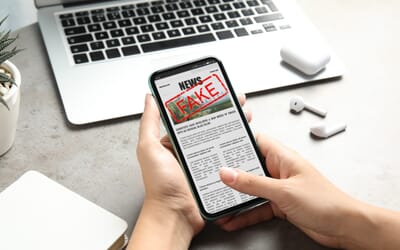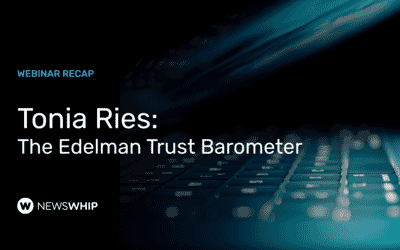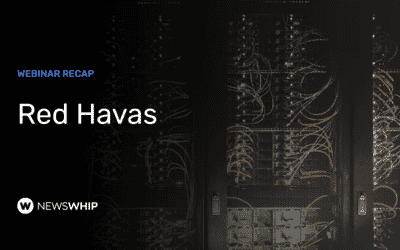The future of storytelling in healthcare communications
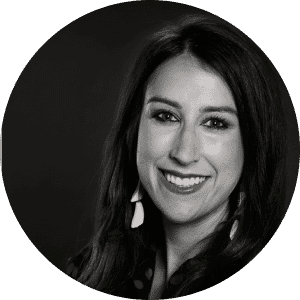
Becky Vonsiatsky,
Real Chemistry
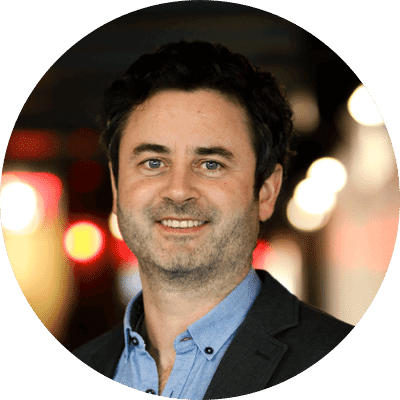
Paul Quigley,
NewsWhip
Topics
In the digital age the rules for reaching an audience change almost constantly, but agencies are rising to the challenge of high expectations for content on newly emerging channels.
Real Chemistry’s Practice Leader of Media & Engagement Becky Vonsiatsky joins NewsWhip’s CEO Paul Quigley to discuss how healthcare storytelling will continue to connect authentically with key audiences, wherever they are.
Guests
Becky Vonsiatsky is a seasoned media strategist leading Real Chemistry’s 50-person earned media team with more than a decade of storytelling experience in the health media space. She has orchestrated a myriad of high-profile earned media programs that reach a range of patient/caregiver, HCP and industry/business audiences for both emerging biotech and well-established pharma clients.
Talking Points
- W2O rebranding to Real Chemistry | Jump to text
- COVID changing healthcare storytelling | Jump to text
- Media consumption habits and local news | Jump to text
- Brand relevance versus brand reputation | Jump to text
- The rise in explainer articles | Jump to text
- Finding relevance diamonds, like maskne | Jump to text
- Advice for breaking through the noise | Jump to text
- Wellness brands during the pandemic | Jump to text
- Influence of local newspapers | Jump to text
- The rise of TikTok | Jump to text
- The Clubhouse boom | Jump to text
- Helping leaders elevate their visibility | Jump to text
- 3 words to describe future healthcare storytelling | Jump to text
Becky Vonsiatsky: I’m glad you’re asking that. So, I’ve been with Real Chemistry for 15 years, and I can tell you that this is the most exciting development in my journey here. Since we were founded, our work and our passion has been in making the world a healthier place. And, we’ve certainly seen through the pandemic that communications are a really central core to that, to ensuring that life-changing healthcare gets to people when they need it the most, wherever they are. And so going from W2O to Real Chemistry is 100% more than a name change. We transitioned into a health innovation company. So, we’re focused on data-driven digital marketing and communications for companies who, just like us, want to reimagine healthcare.
Paul: Brilliant. I love the scale of the ambition there, Becky. You’re the practice leader of not just media, but media and engagement, and because I come from a platform that’s focused on tracking engagement with media, I’m really intrigued by that title of media and engagement. So, can you tell us about your responsibilities?
Becky: Yeah. I’ll start by saying that my team and I are very grateful for platforms like yours that allow us to track media engagement. We pride ourselves on following the data. So, I lead our earned media team, which consists of 50 plus rockstar, precision storytellers. We meld our relationships with journalists, the art of what we do with the science, our Real Chemistry analytics, and tools like yours to allow us to tell the right stories at the right time on the right channel. I would say that the fruits of our labor can be anything from a story in the Wall Street Journal, to a local TV segment on CBS, to a sponsored article within women’s books, but we don’t throw spaghetti on the wall. We make sure that the message syncs with what our client’s business objectives are.
Becky: Yeah. It’s been both a long and a short year and a half, but in looking back and from where I sit today, I think the speed at which the industry responded to the pandemic has really created a reawakening to the importance of health, the importance of wellness, and the importance of the healthcare industry overall. And, for me and my colleagues who are on the front lines of working with some of these vaccine manufacturers, some of these COVID diagnostics, we couldn’t be prouder. The world has really put its faith in science, and once again, really discovered the importance of research, the importance of medicine, and the implications have encompassed every facet of society. And, probably for the first time, we’re now seeing pharma companies are becoming pop culture history. They’re becoming icons on TikTok videos, and we’ve even seen some pharma companies come up on recent Saturday Night Live skits. That’s a new world.
Paul: Consumers have tried to educate themselves in this new world. We talk about R rates. We talk about mRNA like we know what we’re talking about. We talk about aerosol nanometers of size for measuring aerosols. Consumer awareness and interest has really come up in healthcare. How does that change your work?
Becky: Yeah, consumer awareness and their education of healthcare has certainly shot up. Like we were saying, vaccine manufacturers have become household names. Two years ago, I would’ve never expected to be sitting with a group of friends or colleagues saying, “So what flu vaccine did you get?” Right? That wasn’t a question. Antibody therapy, mRNA, PCR tests, those are now part of our daily discourse, and the healthcare vocabulary of my almost six year old and my almost three-year-old I would say is through the roof because of what we’re now talking about at the dinner table, but it creates a backdrop where, as a society, we’ve never been more reliant on health news and when effective messaging around those news has never been more important.
In fact, as it relates to vaccine confidence, which is a topic that I am particularly passionate about and have had the pleasure on behalf of Real Chemistry, working with the Ad Council pro bono on vaccine confidence efforts, what we learned from that is that the messaging, the transparency, and the storytellers is as important, if not more, than the science behind those vaccinations. So, I think that’s something that has become just critically important as consumer awareness about all of these things is more part of a front of mine.
Becky: 100%. So, the mantra for our team has been, throughout the pandemic, stay fluid. In fact, I say it so much that we almost wanted to create a game out of it. The lockdown has certainly had a profound impact in how people consume media and how they receive their healthcare information. Local news has certainly become more relevant. And, I think we’re going to talk about that a little bit later, but at the same time, those local news outlets have been struggling and some have been decimated.
But, COVID has accelerated the digital transformation in healthcare, both for patients and healthcare providers, and the healthcare industry has not missed a beat. In fact, while some companies have decreased their marketing budgets in the healthcare sector, they knew that now was not the time to slow down with their messaging, and that’s something we really encouraged our clients to stay front and center on where it made sense. The implication is that the industry needs to be where consumers were going during COVID. For the most part, they weren’t in their cars, they weren’t listening to the radio. So, we had to move to media channels that are more creative, that are more mobile, that are more dynamic and personalized, and that’s led us to where we are today which is a ripe opportunity for our clients and healthcare to really embrace these new storytelling opportunities and reap the benefits of more modern media strategies.
Becky: I can’t take credit for it. We’ve got a great team here that focuses just on this, and in fact, our Real Chemistry team put together an annual relevance quotient ranking which tracks and identifies organizations and brands within key stakeholders for audiences. And, the reality is, in this digital world, relevance is even more important than reputation. In other words, if you’re not relevant online, you don’t exist. And, so the study found that the most important companies and most relevant companies achieve their status by aligning with their stakeholder or their audience needs by taking action and maintaining momentum. And, the least relevant companies lacked action, lacked agility, transparency, and storytelling.
So, to be successful in creating relevant companies really needed to meet their audiences and their stakeholders where they are tapping into the cultural and societal currencies and the urgency, needing to be timely, topical, agile. Being genuine and authentic is a big one. We’ve got some examples of that. When my clients come to me, and they’re thinking about putting together a perspective, say for a byline article, first questions I think about are, is this timely? Is it remarkable and outside of the box? Is this different than perspective that’s already out there, and is it relevant to this current environment? If it’s not, then the message is usually just self-serving, and for me and my team, when we’re trying to pitch that to reporters, that’s not something that’s going to stick.
So at the end of the day, the big takeaway there, as storytellers, is that we can’t push our own agenda. We’ve got to really understand what our audience’s interests are and what their needs are, and really sit side by side with them. That’s where the data comes in.
Becky: Yeah. Paul, you are referring to one of my favorite articles because it truly represents this phenomenon that we’re talking about. The article was also one of the most viewed stories on The Post. At least it was as soon as a few months ago, because it very simply explains how COVID spreads. And, it didn’t just tell, it showed. It showed how this is happening through some really beautiful and smart simulation which was essentially just this animated infographic. But also, it gave people hope. So, when we think about meeting our audiences where they are and where we were at that time, I think this came out in March 2020, we were stuck in our homes, we were on our iPads, we were feeling hopeless.
That simulator gave people hope. It tapped into cultural currency and urgency and showed that by adapting our behavior, we can actually slow down the pandemic. And, so what this also shows us is that the way we’re communicating about science is just as important as the science itself, right? In this case, it’s really got to be simple. Because it was simple, people shared it, and it got a ton of sharing, so I’m so glad you brought this one up.
Becky: Yeah. And, I’m going to take us out of COVID and I’m going to bring us into an area where we really needed it which was on the dermatology side. NewsWhip was a tremendous resource for us, not only to identify what conversations are happening in real time, but what might trend and peak in days and weeks to come. So, we worked with a company in the dermatology space and amidst the pandemic, not a lot of reporters or people were thinking about their acne or their rosacea, particularly at the start of things. That was the last thing on their mind. But when we went into NewsWhip, we talked that there started to be this rise in conversation about maskne, which is essentially acne caused by wearing a face mask, that was just beginning to trend within some consumer wellness outlets.
So, we partnered very quickly, and again the importance of being agile in terms of relevant, partnered very quickly with a lead dermatologist to break this down for leading consumer wellness, beauty, and also clinical media audiences where this was relevant because the doctors are the ones that are wearing masks every day. And, we secured some incredibly high value, highly syndicated news stories that also mentioned our client’s prescription acne treatment within that coverage. So, these insights really allowed us to get ahead of the trend and give our stories some meat and some sticking power. And, that’s what we do. We follow the data, and this was a really good case in point, that happened not too long ago.
Paul: Really? Maskne.
Becky: Maskne. Did you know that term?
Paul: I thought it was bad enough being a teenager during the pandemic, and next you have maskne happening on top of everything else.
Becky: What we learned through this, it was a lot of the healthcare providers that were suffering from that because they were wearing their masks all day, and it was our essential workers too. So, we have some pretty cool stories come about as a result of that.
Becky: Our media world has certainly been in overdrive during the pandemic, just like many of other specialties. Reporters themselves have been in overdrive. Many have been laid off. Some who weren’t even tracking health care before were covering it now 100% amidst this backdrop where, we talked about this earlier, we’ve never been more reliant on healthcare news and when effective messaging has never been more important. From a media perspective, I can say that COVID has in many ways from a media practitioner perspective emphasized with a big highlighter, what we learned in school and in training. It’s the basics. It just underscored it more.
Relationships, number one, are king. Reporters are wearing many hats. So, remembering that they are people too, and check in, not just when you need something, when you have a story, but to see how they’re doing. It is COVID all the time for many top tier reporters. It has been, and it is for many still continuing to be. So, we need to understand where they’re at and get ahead of the storylines. Related to data outside of COVID from a top tier perspective it’s really had to be practice changing data, so we’ve had to recalibrate our approaches, manage expectations and, and treat some of our clinical trades like the VIP’s that they are.
We’ve also seen a renewed interest and appetite certainly in embargoed [stories] because that gives reporters advanced access to things and can certainly help to contextualize stories in advance.
I would say bottom line though, to answer your question, relationships matter more than ever. Tone and messaging is also critical, and it’s so important that we’re preparing our spokespeople to respond to the news of the day, the events of the world. It’s been a big one. Social injustices, all of that is fair game to come up, particularly when we’re putting our healthcare companies spokespeople out on the line. So, that coaching is critically important.
Becky: Yeah, you’re absolutely right. I think the pandemic has amassed an incredible opportunity for local media to really serve as these reliable sources for information, particularly given at state and local governments. Local health experts were really on the front lines and have become these local influencers, but the pandemic hit some media sectors and mainly local newspapers much harder than others. The pandemic wasn’t necessarily the source for it. We’ve been seeing this trend for a few decades now. Companies have scaled back their advertising. In fact, from 2019 to 2020, there was a 42% dip in advertising to newspapers, so this was already happening.
Amidst the pandemic though, as you can see here, papers cut staff from Gannett. Gannett furloughed from all over, but for example, Gannett furloughed employees, I think, at over 100 newspapers? The local newspaper in New Orleans, they furloughed about 10% of their staff immediately. And, this pattern was just mirrored across the newspaper organizations, not hyper-local newspapers, but also from a regional perspective. So, the rub is that there’s this huge engagement opportunity from a local news perspective because that’s where people are looking for those local influencer insights, but not enough staff to support it.
So, the question for us in our world was how do we break through as a health care company? Definitely recognizing that in any local media, it’s not one size fits all, not all markets are the same, and so it’s important to really calibrate a unique approach to break through based on the dynamic and the environment. I think the second piece is really to lean into data, and analytics, and NewsWhip to get ahead of those local trends that you can peg to and prioritize outreach to the more influential storytellers that are going to help you create that viral moment that you were talking about from a local perspective because it’s not at every paper. Also the important, probably the last thing here is just in offering dynamic assets just make reporter’s lives easier, so bite-sized video that’s shot like a reporter, not the traditional corporate B-roll that we might put together with clients, infograms with local stats to our earlier conversation and those pre-packaged quotes, anything that’s going to make the reporters’ lives easier given the state of their world and the many hats that they’re wearing.
Becky: Yeah. We’ve certainly learned through all of this that it’s not about putting a product in front of consumers anymore. It’s about being a participant in the conversation and the places that they’re having. So, a good example of this is for sure TikTok. TikTok flourished amidst the pandemic. I think I saw a recent report that showed there was, through COVID, about a 24% month over month increase in adult use, so it’s not just for the young ones. It shows here there were about 800 million monthly users, including HCPs and consumers of all ages who are going there for health information. The evolution of TikTok within healthcare has been pretty similar to other social networks. So, it started as more of a PSA, general disease awareness-related messaging, and now moving to more branded programming. And, the Real Chemistry team has actually helped to create some of the first pharma-branded TikToks, which was pretty fun to be involved with. What’s that?
Paul: These would be some examples here, would they Becky?
Becky: Can’t take credit for all of these, but I wanted to give you just a nice assortment of some ones that have appealed to me and that have come up in my own TikTok when I’ve just been exploring it for things like this.
I think, regardless of if it’s Clubhouse or something else, social audio will stick, but specific to this and specific to healthcare, agenda setting biopharma reporters are actively participating on Clubhouse. They’re using it to extend their reach and discussion of stories that they’ve written about, but also to find sources for their digital Rolodex. And, this also poses an opportunity. It’s something that I’ve seen a lot of folks in the industry do. I might even find you on there, Paul, adding to the live discussion. You can simply build your own thought leadership by raising your hand, pressing a button, and asking a smart question or sharing some authentic point of view.
Paul: I might pop up there one day.
Becky: I’m going to find you.
Paul: TikTok’s algorithm was a little too good. I had to delete it from my phone, so I could continue being a human in the real world.
Becky: Yeah. So, I think essential to this notion is really that peers trust peers, more than they trust brands or more than they trust logos. And so, as it relates to healthcare in particular, say a CEO or a researcher, the tone has to be authentic, and you certainly need to lean into some of the learnings that we’ve talked about from the relevance perspective, topical timely, genuine. At Real Chemistry we work with a company in the cancer diagnostic space, and they were looking to drive executive thought leadership for their CEO, and we encouraged him to approach it a little bit differently. He opened up questions with an “ask me anything” on LinkedIn, and the response was so overwhelming. And, so this is the type of transparency from the CEO that’s unusual but was appreciated. And, so our team of media coaches, of social media experts and analysts have designed a practice to really help leaders identify types of forums, where they can elevate their visibility in this way, in a way that’s genuine and authentic.
As it relates to influencers though, we’re seeing influencers really could be anyone, not just a celebrity. It could be a mom, a physician. Dr. Fauci, he’s my favorite influencer right now. He was actually just on Clubhouse and killed it the other week. So, influencers vary, and it all depends on the audience and who you’re looking to reach. The other thing, and probably the last thing I’ll say here, because we work in healthcare we’re often looking to reach doctors, and doctors are people too. So, when we think about reaching them authentically, it’s not just thinking about the trades, but thinking about where they’re consuming news, where they’re scrolling on their phones or their tablets, et cetera.
Becky: Oh, okay. Well, my first one, I would say it can be one word if you put a hyphen in it. I would say digital-first. We’ve seen rapid acceleration in digital health behaviors, and I think that will only continue. And, that’s something that we at Real Chemistry are here to do. My second would be technology. That’s essential for health equality. We need to make technology work harder for every patient everywhere. And, the last one would be patient-centric. I think between data analytics and tech enablement, we can create that real chemistry, no pun intended, to connect patients with healthcare providers in a meaningful way. But, because that was such a good question, Paul, I’m going to pose that one back to you. How would you answer that?
Paul: Healthcare communications. Now, I think that was five words, Becky. Hyphens are different on different sides of the Atlantic actually. When I see something that’s I see in the data in NewsWhip, I see in survey data, and experience myself, then I’m like, “This is a trend.” And, for me, as more of a consumer side here, I’d say it’s networks of trust. A lot of the top-down messaging and things, people feel are real or not. That’s why they want to directly with the CEO in an AMA. People have the influencers who they trust about two things and they might start trusting them about five things next. As you’ve said, the digital lives, their networked lives, and we’re all trying to work on a framework of trust and who we trust for advice. So, I think it’s going to be all about we’re going to have these different, slightly personalized networks of trust. And, I’m sure Real Chemistry will be at the helm of building those networks and helping communicators navigate them.
We will be there. You’re right. Thank you so much for the session today. It was so fun.
This has been really brilliant, Becky. I’m about to go a minute over. If my audience will forgive, I just want to give a shout out for what’s coming in two weeks because we’re going to have the Head of Research and Editorial of NewsWhip Benedict Nicholson will be joined by Chris Rivera, the Director of Corporate Reputation at Samsung. And, they’ve got a reputation risk intelligence framework which is really well-developed and quite cutting edge technology.
So, I would invite everyone to please come and join in two weeks. And, please join me in saying the last thank you to Becky from Real Chemistry. It’s been brilliant having you on.
View our on-demand webinars
Lessons for brands from the frontlines of social media manipulation
Governments globally, particularly in conflict zones, confront the persistent threat of social media manipulation, as evidenced by ongoing information warfare in regions like Ukraine. However, there are dedicated organizations such as Valent Projects actively working...
When distrust defines society’s relationship with government & media
Humanity’s potential for progress and creativity risks sustained damage when distrust is the foundation and society is no longer characterized by positive relationships with government, media, business, and non-governmental organizations (NGOs). Still, data from this...
Mastering the balance of mixternal communications
In the midst of talent wars, mixternal communications is a juicy topic at companies intent on attracting and retaining employees. We examine addressable opportunities to bring balance to internal and external communications. For the first NewsWhip Pulse episode of...





